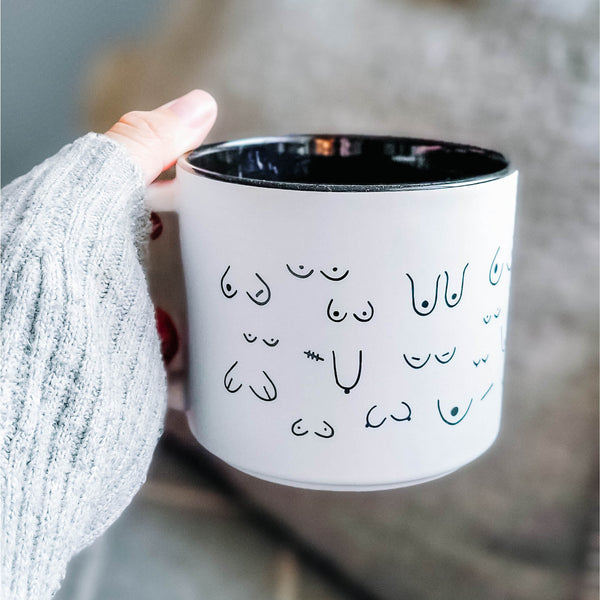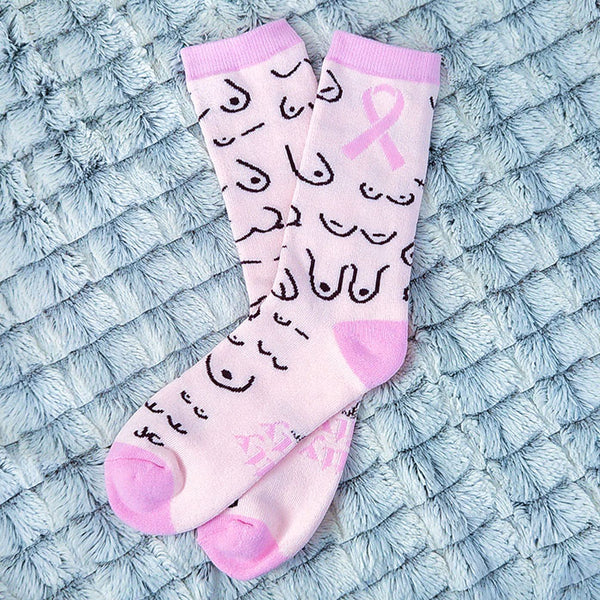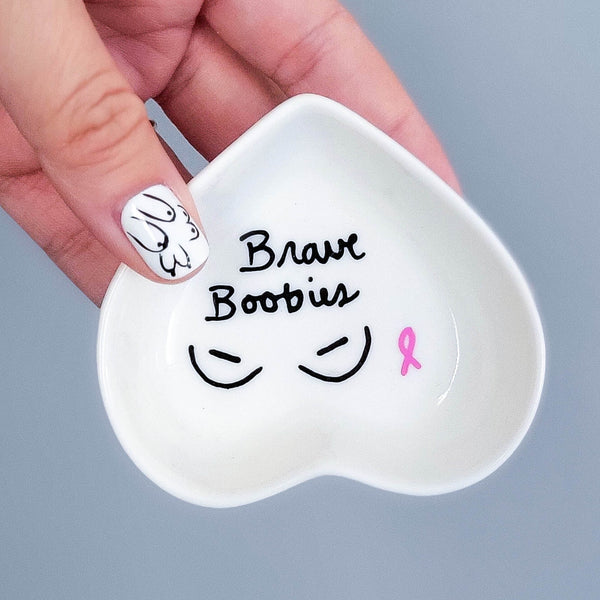The Different Stages of Breast Cancer and What They Mean

Estimated read time: 17 minutes
Are you looking to find out more about the different stages of breast cancer? You are in the right place.
Sadly, each year in the US, about 240,000 cases of breast cancer are diagnosed in women, with about 42,000 women dying each year from the disease. This makes breast cancer the most common cancer in the US.
If you’ve been recently diagnosed, or you’re supporting a loved one who has been diagnosed with breast cancer, then we are so sorry Breastie. We know what a scary and difficult time this is and we’re so proud of you for being so strong.
In this article:
We’re going to look at the different stages of breast cancer, to help you understand the varying levels of the disease and what they mean. You’ve got this Breast Friend.
- Different stages of breast cancer
- How the stages of breast cancer are determined
- T category
- N category
- M category
- Different stages of breast cancer and what they mean
- Stage 0
- Stage 1 breast cancer (I)
- Stage 2 breast cancer (II)
- Stage 3 breast cancer (III)
- Stage 4 breast cancer (VI)
Different stages of breast cancer
The first thing you have to understand is the different options available to treat your specific type of breast cancer. These depend on a range of factors including the stage and grade of your cancer.
The different breast cancer treatments include:
- Surgery to remove the cancer
- Chemotherapy to shrink or kills the cancer cells
- Hormonal therapy to block cancer cells from getting the hormones they need to grow
- Biological therapy which works with your immune system to help fight cancer cells
- Radiation therapy which uses high-energy rays to kill cancer cells
But, what does the term “different stages of breast cancer” actually mean? Well, doctors assign different stages to breast cancer to describe how advanced it is and help choose different treatment options.
There are two main categories of breast cancer - noninvasive and invasive. While noninvasive breast cancers stay within the milk ducts and the milk-producing glands, most types of breast cancer are invasive and spread and invade healthy tissue.
If you have been diagnosed with breast cancer, your doctor will try and figure out if it has spread and, if it has, how far. This process is called staging, and it determines how much cancer is in your body, how serious it is, and how best to treat it.
How are stages of breast cancer determined?
We will go through the different stages of breast cancer in more detail a little later, but the earliest stage breast cancers are stage 0. They then range from stage 1 breast cancer, stage 2 breast cancer, stage 3 breast cancer, and stage 4 breast cancer (I, II, III, IV).
A higher number, such as stage 3 or stage 4 breast cancer, means more cancer has spread around the body. Within each stage, an earlier letter means a lower stage. While everyone has a unique cancer experience, when cancers are grouped into similar stages, it means they generally have a similar outlook and are often treated the same way.
So let’s look at how breast cancer stages are determined. This is usually done by looking at the cancer’s characteristics, such as how large it is and whether or not it has hormone receptors.
-
Clinical examination - Your doctor or healthcare team will conduct a physical exam to assess the size and location of your tumor and check you for any swollen lymph nodes.
-
Imaging - Imaging tests such as mammograms, MRIs, ultrasounds, and CT scans can help your doctor visualize the tumor and see if it has spread to other areas of your body.
-
Biopsy - This involves removing a small piece of tissue from the tumor or lymph nodes to confirm the presence of cancer cells as well as their characteristics. This helps determine the stage of cancer.
-
Staging systems - TNM is the most commonly used staging system. It takes into account the size of the tumor, the involvement of the lymph nodes, and the presence of metastasis (if it has spread). Numbers or letters after T, N, and M give more details about each characteristic. Higher numbers mean the cancer is more advanced.
- Pathology reports - Pathologists study the tissue samples taken from the biopsy to assess the cancer’s grade, hormone receptor status, HER2 status (to determine if the cancer cells are making too much of the HER2 protein), and other factors to figure out the stage and help plan treatment options.
The TNM system can be a little tricky to wrap your head around, so here is a little more information about how it works.
The T Category
The T (size) category describes the primary tumor and it’s broken down like this:
- TX - the tumor can’t be assessed
- T0 - there isn’t any evidence of the original tumor
- Tis - the cancer hasn’t started to spread into healthy breast tissue
- T1, T2, T3, T4 - each number is based on the size of the tumor and the extent it has grown into the surrounding breast tissue. The higher the number, the larger the tumor or the more it may have spread
The N Category
The N category describes whether or not the cancer has reached lymph nodes:
- NX - lymph nodes can’t be assessed
- N0 - lymph nodes don’t contain cancer
- N1, N2, N3 - each number is based on the number of lymph nodes involved and how much cancer is found in them
The M Category
The M category determines whether or not cancer has spread to other areas of your body:
- MX - metastasis can’t be assessed
- M0 - no distant metastasis
- M1 - metastasis is present
In general, the tests and scans you have to diagnose breast cancer give your doctors information about the size of the cancer and whether it has spread (the stage), and how abnormal the cells look when examined (the grade).
Different stages of breast cancer and what they mean
The stages of breast cancer are used to describe how far your cancer has advanced and where it has spread (if at all) around your body. If the cancer hasn’t spread beyond your Brave Boobies then it is considered local. Regional cancer is used when it has spread into your lymph nodes, and if it has spread further it is considered distant.
Your long-term outcome relies on what stage your cancer is. Let’s have a closer look at each of the stages.
Stage 0
This refers to noninvasive breast cancers, such as DCIS (ductal carcinoma in situ) which is the most common noninvasive type of breast cancer where cancer develops in the ducts that carry milk to the nipple but doesn’t spread beyond this.
Stage 1 breast cancer (I)
This is early-stage breast cancer. Here, the tumor is small, usually less than 2cm, and it hasn’t spread to your lymph nodes or other parts of your body. Stage 1B means that a few breast cancer cells are found in the lymph nodes close to the breast and that either no cancer is detected in the breast or the tumor is 2cm or smaller.

Stage 2 breast cancer (II)
Stage 2 (or stage II) breast cancer means locally advanced breast cancer. This is when the tumor is larger and it might have spread to nearby lymph nodes but not to distant organs. Stage 2 breast cancer is still considered an early-stage breast cancer and means that either no cancer is found in the breast (or the tumor is 2cm or less) and cancer cells are found in 1 to 3 local lymph nodes, or the cancer is larger than 2cm (but not larger than 5cm) and there is no cancer in the lymph nodes.
Stage 2B can mean three things. The cancer is larger than 2cm but not larger than 5cm and there are small areas of cells found in the lymph nodes, that the cancer is larger than 2 cm but not larger than 5 cm and has spread to 1 to 3 lymph nodes in the armpit or to the lymph nodes near the breastbone, or that the cancer is larger than 5cm and has not spread to the lymph nodes.
Stage 3 breast cancer (III)
Stage 3 breast cancer (or stage III) is also classified as locally advanced breast cancer, and it is when the cancer has spread more extensively to your lymph nodes, chest wall, or skin, but it hasn’t reached your distant organs.
The chest wall refers to the structures surrounding and protecting the lungs, such as the ribs, muscles, skin, or connective tissues. When it spreads to the skin, it can make it break down or cause swelling.

Stage 4 breast cancer (VI)
Stage 4 breast cancer (or stage IV) means it is metastatic breast cancer, and the cancer has spread to distant organs such as the lungs, liver, bones, or brain. Stage 4 breast cancer is also called advanced cancer or secondary breast cancer.
In this stage, the cancer can be any size, the lymph nodes may or may not contain cancer cells, and the cancer has metastasized to other parts of the body. While this stage of breast cancer is unlikely to be cured, treatment can very often be used to keep the cancer under control for months or even years.

You’ve got some Brave Boobies
And we are so proud of how strong you are. Understanding the stages of breast cancer can empower you to actively participate in your treatment decisions alongside your doctor.
It’s important to remember that every breast cancer journey is unique and your stage doesn’t determine your strength or determination. Remember mama, you are never alone in your journey. You are surrounded by people who love and support you, and there are a number of resources available to offer further advice and support. We’ve listed a few of them below in case you ever need to reach out.
- National Breast Cancer Foundation, Inc
- Breastcancer.org
- Surviving Breast Cancer
- American Cancer Society
At Titty City Design, we believe that every boobie is beautiful, and that should be celebrated. We are a female-owned and operated, small business here to spread self-love and body positivity with our line of boob apparel, boob accessories, and boob-themed decor and products for the home. A portion of our proceeds goes to help support postpartum people and breast cancer patients.
Gifts for Mastectomy Patients
















